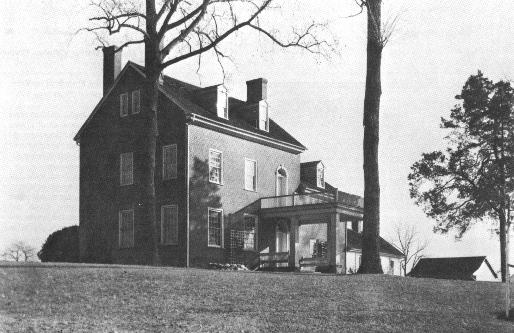Potter Hall - National Historic Site
After scanning, the quality of some of the photos was not quite what I'd like them to be, but I hope you enjoy seeing them anyway.

Williston
Private
This mansion, crucial to the architectural, economic, and political histories of Caroline County, stands on a well shaded hilltop overlooking the Choptank River south of Denton. The first Potter on the site, Zabdiel, was a Rhode Island sea captain who settled here in the mid-eighteenth century and built a wharf and the small brick house that forms the central section of the present structure. Zabdiel developed his wharf into a key early commercial site, with boats laden with tobacco regularly leaving for Baltimore.
His oldest son, Nathaniel, was a leading figure in the Revolutionary War; he became a major and was in charge of procuring provisions for the American troops. A later Potter, Nathaniel's nephew and namesake, was one of the first American-trained physicians and became a facuity member of the University of Maryland Medical School.
Nathaniel II's brother, William, stayed at Potter's Landing and represented the county in the state legislature. In 1806, he became a director of the newly established Farmers Bank of Annapolis. He retired in 1809 and moved back to the Landing and to the house he had had enlarged in 1808. The War of 1812 interrupted his rest, forcing him to leave Caroline County to become a Brigadier General of the Maryland Militia. The estate left the Potter family in the mid-1850s.
The building consists of three parts: in chronological order, (1) a two-and-a-half-story central section; (2) a taller three-bay, two-and-a-half-story section; and (3) a one-story, four-bay, white clapboard final addition. Although the two earliest sections are in brick laid in Flemish bond, there is some evidence that the oldest section had its walls relaid in 1806 to match the larger section built in that year. This taller section is unique in Caroline County. Both its principal facades (land and water) are identical, with a side entrance enframed by fluted pilasters and semicircular fanlights. Old photographs reveal that this section was built with two-story porches across both the main walls. Windows on the two main floors in this section are 12/12 paned below high jack arches. The interior abounds in excellent period woodwork. Notable are the mantel and the cabinets in the ground floor east room. Especially interesting is the herringbone pattern present not only on the mantel on the ground floor west room but also on the side hall chair rail, and on the second floor doors that originally led to the porches.
The interior of the smaller scale building appears to have been rebuilt around 1845. The one-story wing dates from the 1930s.
Thus, Potter Hall is historically significant for the people who built it and lived in it, and architecturally interesting for its several locally unique features and because so much of its early fabric is still intact.